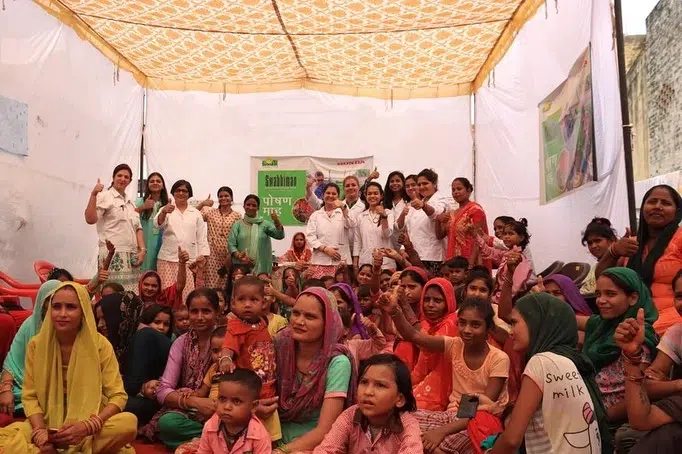“Health is Wealth” is a well-known proverb, but do we truly understand its literal meaning? A healthy population is important to a country’s development and progress. Presently, healthcare in India is at a point where technology, policy, and human effort can come together to create a more efficient and fair system.
The foundation of this transformation lies in collaboration. Collaboration in healthcare is not a single path, but a complex network of interdisciplinary partnerships. It includes public-private partnerships (PPPs), cross-sectoral alliances, and community engagement, each playing a pivotal role in improving healthcare delivery.
Public-Private Partnerships: Bridging Gaps
Public-private partnerships (PPPs) can play a significant role in bridging the gaps in healthcare and contributing to the progress of India’s healthcare system. PPPs have emerged as a solution to bridge the gap between resource constraints and healthcare demands. By leveraging the strengths of both sectors, PPPs have facilitated the establishment of sophisticated healthcare infrastructure, especially in rural and underserved areas.
Telemedicine initiatives and mobile health clinics are success stories demonstrating such partnerships’ efficacy. PPPs can enhance accessibility, and affordability, and strengthen healthcare infrastructure, particularly in rural areas and marginalized communities. Collaboration between the public and private sectors can lead to innovative healthcare solutions, including new treatment methods and medical technologies.
To improve service quality, the qualities of both sectors can be combined to achieve better results. The focus of the private sector on customer satisfaction can help raise the quality of healthcare services. PPPs can introduce best practices and quality standards from the private sector into public healthcare services.
PPPs can also expand health insurance coverage by integrating government schemes with private insurance products, thus increasing the population’s access to insured healthcare services. By leveraging technology and the private sector’s technological prowess, PPPs can modernize public healthcare systems, leading to more efficient patient care and data management.
Human resource challenges can be mitigated by attracting private sector talent to public health initiatives. The private sector can bring in additional funding and investment, ensuring financial stability, and reducing the burden on public finances. Joint efforts in research can lead to better healthcare outcomes.
PPPs can facilitate shared research facilities and collaborative programs that benefit public health. By leveraging the strengths of both the public and private sectors, PPPs can address the systemic challenges of India’s healthcare system, making quality healthcare more accessible and affordable for all citizens.
Cross-Sectoral Alliances: A Holistic Approach
Healthcare challenges often go beyond the boundaries of medicine, requiring partnerships with other sectors like education, nutrition, and sanitation. Collaboration in healthcare across sectors aim to address the social determinants of health, recognizing that a comprehensive approach is essential for sustainable health outcomes.
Programs that integrate health education in schools and nutritional interventions in mid-day meal schemes are examples of this approach. Healthcare is not a stand-alone sector but intersects with various other sectors such as education, nutrition, and sanitation. Therefore, strategies must include cross-sectoral policies that tackle these interconnected areas to improve overall health outcomes.
The true essence of collaboration lies in the active participation of the community. Empowering individuals with knowledge and tools to manage their health fosters a sense of ownership and responsibility. Community health workers (CHWs) serve as the linchpin in this model, bridging the gap between healthcare systems and the populace.
Challenges and Opportunities
Indian healthcare system has made significant progress in recent years, but there are still many challenges that need to be addressed. Despite the potential for collaboration, issues such as fragmented systems, lack of trust, and resource disparities persist. Overcoming these obstacles requires a focused effort to build transparent, accountable, and mutually beneficial partnerships.
India is facing a massive shortage of medical personnel and infrastructure, especially in remote and rural areas, which desperately need improvement. There is a significant disparity in the distribution of healthcare services between states and within states. The health budget has not increased significantly in real terms, and there is no policy in place to strengthen the public and private sectors in underprivileged areas.
Patients bear a significant portion of healthcare expenses out-of-pocket, leading to financial hardship and even impoverishment. There is a heavy reliance on private healthcare, with approximately 70% of the population relying on it. This means that if private healthcare were to crumble, India’s entire healthcare system could be at risk.
Insufficient research funding and a lack of emphasis on innovation are also major challenges. These are crucial for addressing existing life-threatening diseases and preparing for future health crises. Additionally, there are concerns regarding the legal and regulatory framework, particularly in terms of privacy, data protection, and ethical considerations in healthcare collaborations.
The Road Ahead for Collaboration in Healthcare
The future of healthcare in India is contingent upon the strength of its collaborative endeavors. As the nation strides towards achieving the Sustainable Development Goals (SDGs), the collaborative model presents not just an opportunity but a necessity. Collaboration is pivotal for the progress of India’s healthcare system. A strategic blueprint for such collaboration involves several key components.
The first step should begin with establishing a Unified Digital Infrastructure. The National Digital Health Blueprint (NDHB) and the National Digital Health Mission (NDHM) outline a comprehensive strategy for creating a unified digital health ecosystem. Public-private partnerships (PPPs) are essential for leveraging the strengths of both sectors to improve healthcare access and quality.
Community engagement
is crucial for the success of healthcare initiatives. Strategies should focus on empowering communities through education and participation, using community health workers as agents of change. Collaborative R&D between academia, industry, and government can drive innovation in healthcare, including shared research facilities, joint funding initiatives, and collaborative research programs.
Strengthening policies and governance structures
are needed to guide and sustain collaborative efforts. The Ayushman Bharat scheme, for instance, is a result of comprehensive dialogue among various stakeholders, aiming to provide universal health coverage. Addressing legal and regulatory requirements is necessary to deal with issues related to privacy, data protection, and ethical considerations in healthcare collaborations.
Identifying and managing risks associated with collaborative healthcare initiatives
is essential for implementing risk management. To ensure sustainable financing, strategies must include financing models for healthcare collaboration that involve innovative funding mechanisms, insurance schemes, and budget allocations.
Telemedicine, mobile health applications, and AI-driven diagnostics
can be included to enhance healthcare delivery by leveraging technology and innovations. Investing in capacity building and training for healthcare professionals and administrators is vital for the effective implementation of collaborative strategies.
Continuous monitoring and evaluation
are necessary to assess the effectiveness of collaborative initiatives and make data-driven decisions for improvement. These strategies form the blueprint for collaboration in healthcare, which is essential for achieving the goal of universal health coverage and improving the health and well-being of all citizens in India.
Collaboration for Healthcare
Collaboration in healthcare is more than a strategic choice- it is the foundation upon which the edifice of India’s healthcare progress rests. All of Smile Foundation’s healthcare efforts through its Health Cannot Wait initiative depends on active collaboration among corporates, individuals, governments and other invested development organizations are partnerships beyond traditional silos. India can envisage a healthcare system that is not only advanced but also accessible to every citizen.









